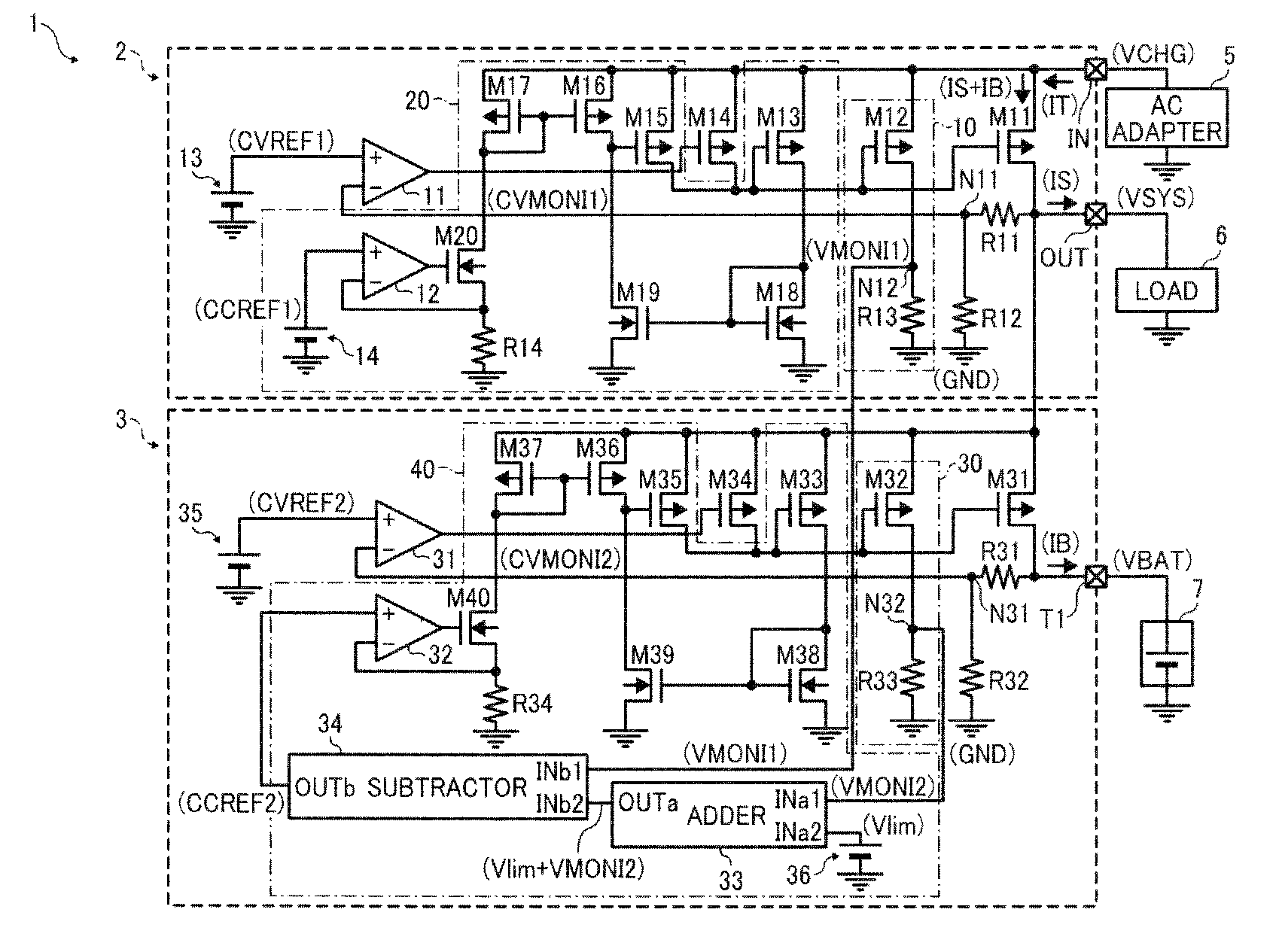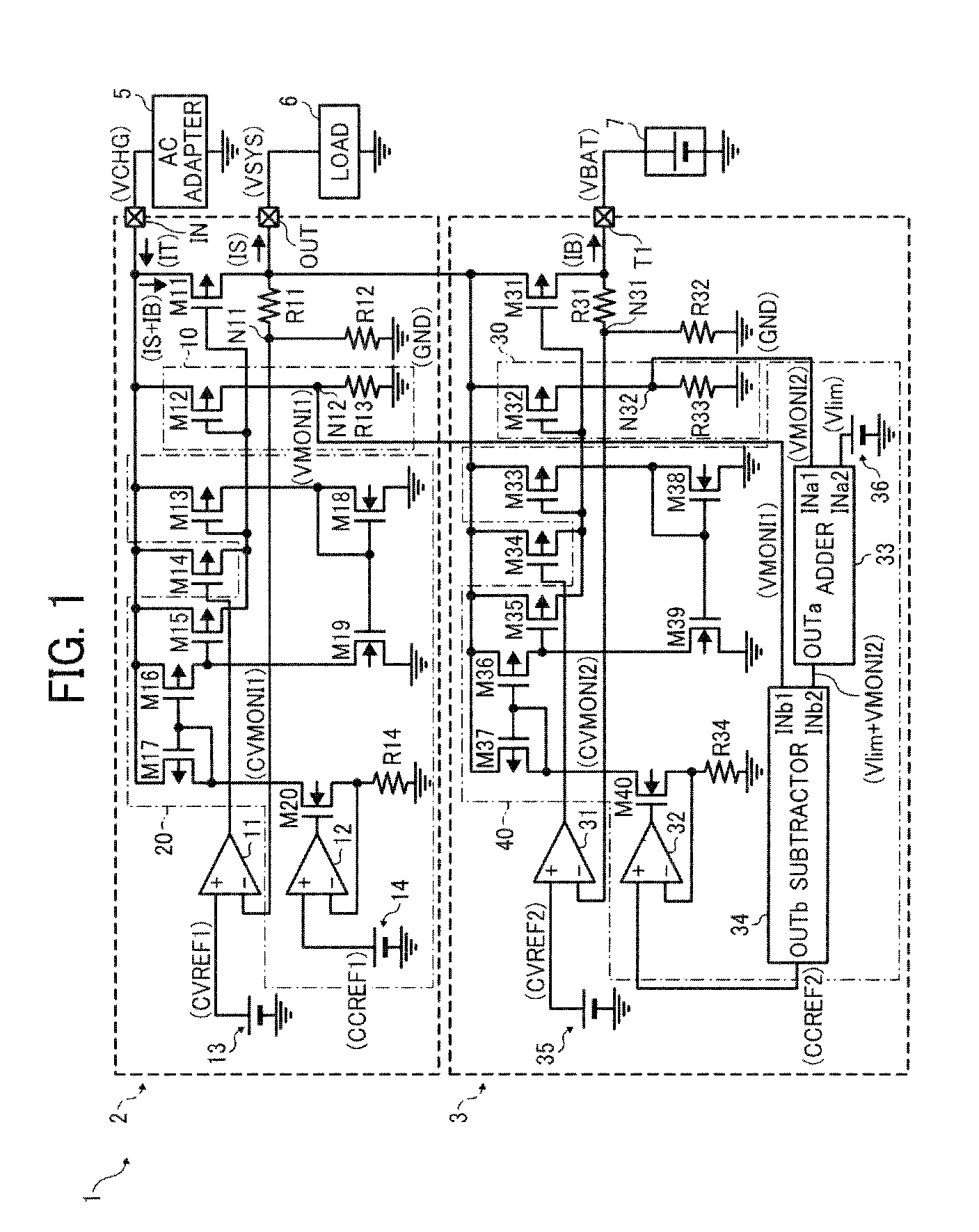Charge controller
- Summary
- Abstract
- Description
- Claims
- Application Information
AI Technical Summary
Benefits of technology
Problems solved by technology
Method used
Image
Examples
second embodiment
[0071]FIG. 2 is a circuit diagram schematically illustrating a charge controller 1a according to this patent specification.
[0072]As shown in FIG. 2, the overall configuration of the charge controller 1a is similar to that depicted in FIG. 1, including a power supply circuit 2 with an input terminal IN connected to an AC adapter 5, and an output terminal OUT connected to a load circuit 6, as well as a battery charge circuit 3a with an input terminal connected to the output terminal OUT and an output terminal T1 connected to a rechargeable, secondary battery 7.
[0073]The power supply circuit 2 comprises a series voltage regulator that converts an input voltage VCHG input to the input terminal IN from the AC adapter 5 to generate a constant output voltage VSYS for supply to the load circuit 6 at the output terminal OUT. The battery charge circuit 3a derives power from the power supply circuit 2 to charge the secondary battery 7 with a charge current IB at a battery voltage VBAT.
[0074]Un...
third embodiment
[0080]FIG. 3 is a circuit diagram schematically illustrating a charge controller 1b according to this patent specification.
[0081]As shown in FIG. 3, the overall configuration of the charge controller 1b is similar to that depicted in FIG. 1, including a power supply circuit 2 with an input terminal IN connected to an AC adapter 5 and an output terminal OUT connected to a load circuit 6, as well as a battery charge circuit 3b with an input terminal connected to the output terminal OUT and an output terminal T1 connected to a rechargeable, secondary battery 7.
[0082]The power supply circuit 2 comprises a series voltage regulator that converts an input voltage VCHG input to the input terminal IN from the AC adapter 5 to generate a constant output voltage VSYS for supply to the load circuit 6 at the output terminal OUT. The battery charge circuit 3b derives power from the power supply circuit 2 to charge the secondary battery 7 with a charge current IB at a battery voltage VBAT.
[0083]Unl...
PUM
 Login to view more
Login to view more Abstract
Description
Claims
Application Information
 Login to view more
Login to view more - R&D Engineer
- R&D Manager
- IP Professional
- Industry Leading Data Capabilities
- Powerful AI technology
- Patent DNA Extraction
Browse by: Latest US Patents, China's latest patents, Technical Efficacy Thesaurus, Application Domain, Technology Topic.
© 2024 PatSnap. All rights reserved.Legal|Privacy policy|Modern Slavery Act Transparency Statement|Sitemap



